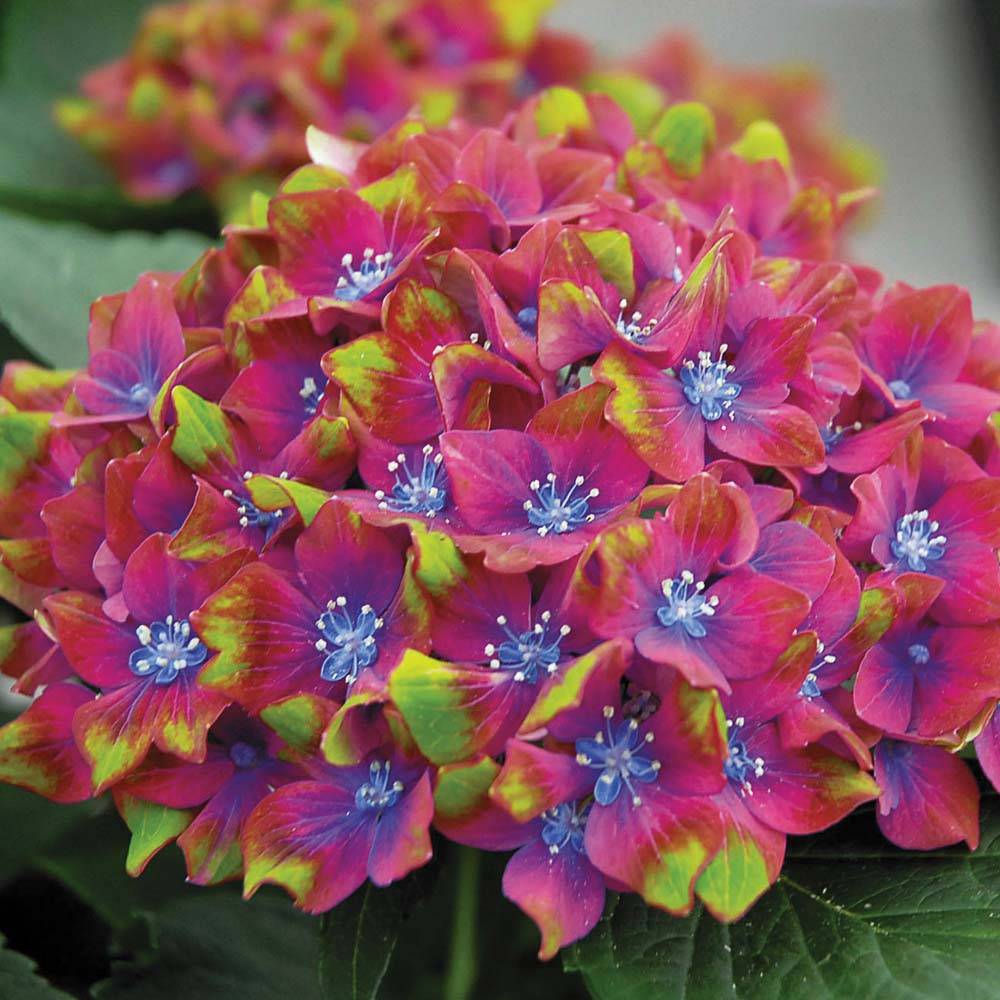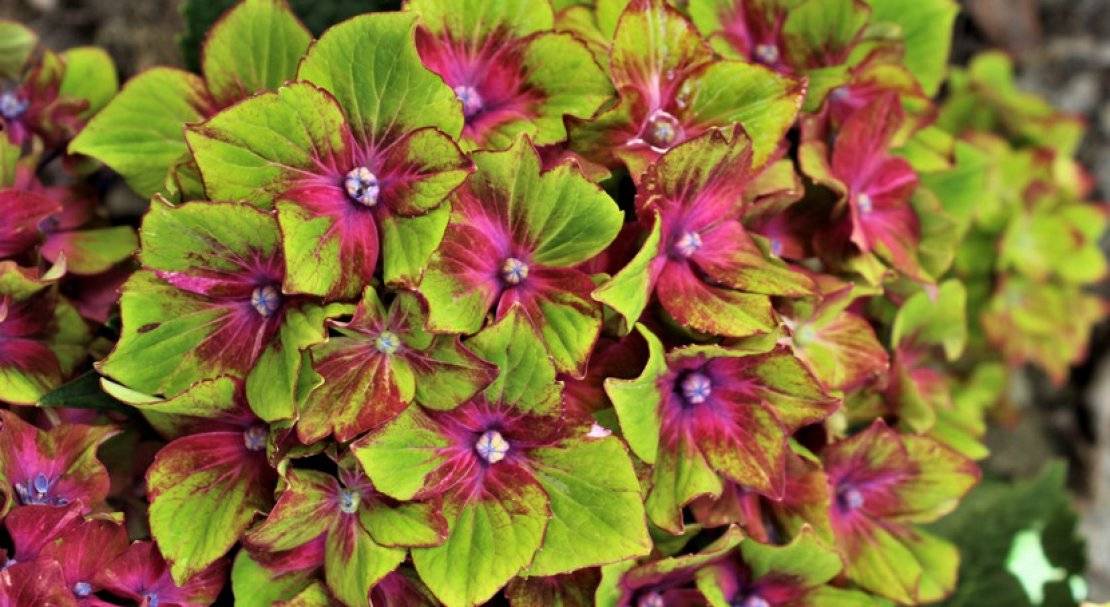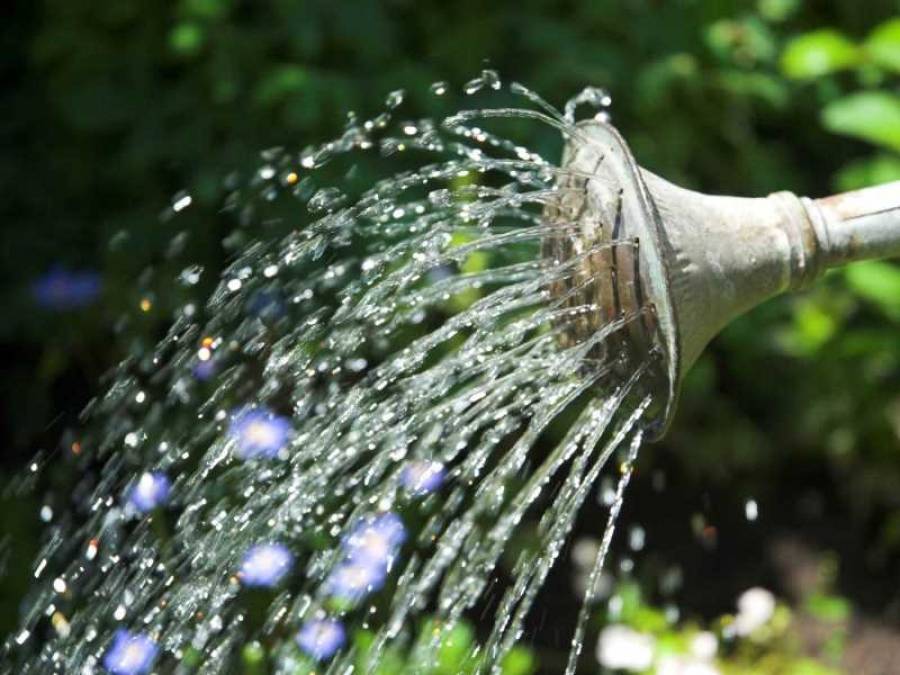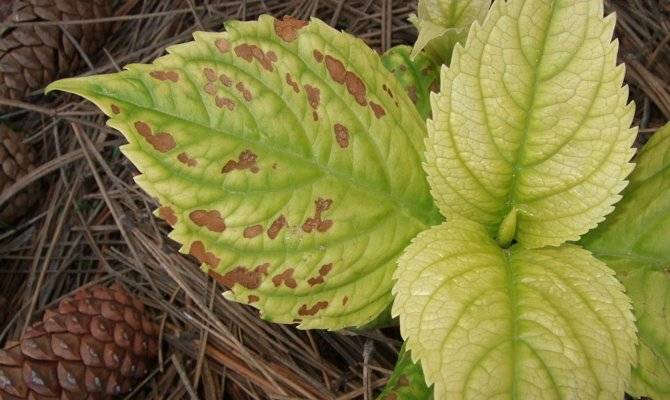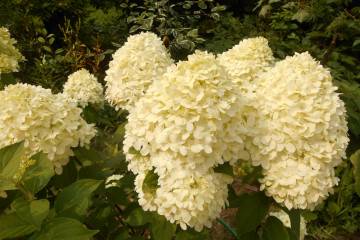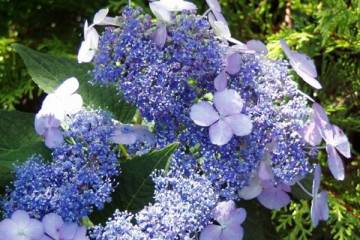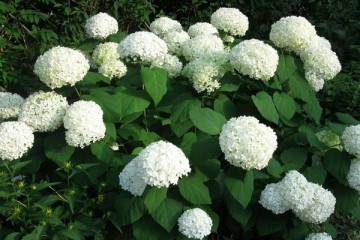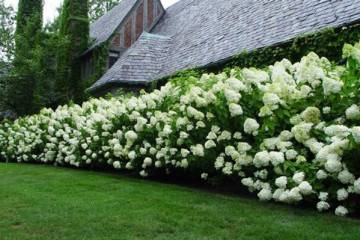Hydrangea Schloss Wackerbart - description, planting and care
Content:
Hydrangea Schloss Wackerbart is a spectacular perennial plant. It has spherical inflorescences. This large-leaved variety can become a real decoration of the garden area. Long-term flowering is considered a key advantage of the culture. It lasts from mid-summer until the very frost.
Description of the Schloss Wackerbart hydrangea variety and its characteristics
A perennial of this variety has unusual bright inflorescences. That is why the Schloss Wackerbarth hydrangea is very popular with gardeners.
History of origin
This large-leaved crop is considered relatively new. Hydrangea Schloss Wackerbarth was only received in 2011. It was bred by German breeders. The plant has brightly colored flowers.
Features of the variety
In the description of the hydrangea by Schloss Wackerbarth, it is said that the plant has red-crimson petals. They are distinguished by a blue-violet center. The color contrast parameters are influenced by the reaction of the environment. The more acidic the soil, the more saturated the shades of the plant.
By the end of flowering, the petals change their color. They become greenish and at the same time leave a red border. The flowers are medium in size and reach 3-5 cm in diameter. They form a dense spherical inflorescence and large size.
Winter hardiness
The culture has average winter hardiness parameters. It is able to withstand temperatures as low as -18 degrees. It is better to cover the plant for the winter.
Planting and further care
Planting and caring for the Schloss Wackerbart large-leaved hydrangea should be carried out taking into account a number of features.
Site selection and preparation
Hydrangea can withstand a lack of light well, but for a bright flowering it should be planted in open areas. There should be no tall bushes or trees near it. Hydrangea should be planted in loose and nutritious soil. It should be acidic enough.
If the selected location does not meet the requirements, it needs to be prepared. To do this, you should do the following:
- Dig up and loosen the bed.
- Water the soil well, add liquid fertilizer for the hydrangea.
- Make the soil more acidic. To do this, it is worth adding a little vinegar or special feeding to it.
How to plant
To carry out planting work, you need to make grooves 30 cm in size. They are made at intervals of 1 m. One third of the groove is filled with a nutrient composition. To do this, it is necessary to combine peat and humus. These components are taken in equal parts. Top fertilizer needs to be poured with water. For this, it is worth using settled or rainwater.
The hydrangea root should be placed in the center of the groove. It is important to ensure that the root collar is on top. Shoots should be sprinkled with loose earth and tamped carefully. Then the bush needs to be well watered and covered with sawdust near the trunk.
Watering and feeding
Hydrangea Wackerbart Castle requires moderate watering. Typically, the shrub should be watered daily until fall arrives. This is especially important in hot weather.It is worth moistening the plant as the earth dries out.
At the beginning of the growing season, nitrogen fertilizers should be applied. At the stage of bud formation, potassium and phosphorus are used. The use of organic matter is of no small importance.
Pruning
The hydrangea should be pruned annually. At the same time, thin and weak branches are shortened, which are directed towards the inside of the crown. You should also get rid of dry shoots. To improve the appearance of the plant, strongly elongated shoots can be shortened.
Preparing for winter
The variety has insufficient frost resistance. In order for the bush to winter normally, it should be covered. To do this, you can make a shelter from dry branches. You can also hilling the bush and cover it with agrofibre. This will help withstand frosts down to -18 degrees.
In warm areas, the bush can be piled up to a height of 30 cm. In areas with severe frosts and winters, which are accompanied by a minimum of snow, peat and sawdust are used as insulation. Before covering the plant, dry buds and leaves must be removed.
Reproduction
Hydrangea can be planted with cuttings or divided into bush. It is best to use the division of the rhizome. For this, mature bushes that have grown well are suitable. In this case, the plant must be dug up and divided into fragments. Then you can land.
Another method is grafting. To do this, you need to choose powerful shoots and prepare cuttings 15-20 cm in size from them. Each cutting should have several large buds. The bottom of the cutting should be cut at an angle of 45 degrees. Soak the workpieces in a growth stimulator and place in a substrate. After a few weeks, the roots will form.
Diseases and pests, means of combating them
Hydrangea commonly encounters chlorosis, powdery mildew, cancer, and rust. In case of chlorosis, soften the water by mixing it with citric acid. It is also necessary to reduce the amount of fertilizer. For gray rot, Bordeaux liquid should be used. To cope with powdery mildew will help "Topaz" or "Fitosporin".
Of the pests, the shrub can suffer from spider mites, aphids, slugs. It is also susceptible to attacks by root knot nematodes. Insecticides will help to destroy pests.
Use in landscape design
An ornamental plant is used to decorate flower beds, alleys, garden paths. Hydrangeas look very beautiful in garden compositions. They can be combined with evergreen crops. Also, the plant is planted singly or in greenhouses. A decorative hedge can be formed from it.
Hydrangea Schloss Wackerbart has excellent decorative properties. The plant is distinguished by its unpretentious care and lush flowering. To achieve success in growing, you need to ensure proper watering and fertilization.
